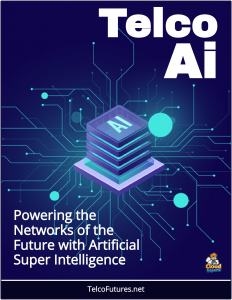 The TM Forum NeuroNOC Catalyst Project is a transformative initiative designed to revolutionize telco network operations by harnessing AI to create self-healing networks.
The TM Forum NeuroNOC Catalyst Project is a transformative initiative designed to revolutionize telco network operations by harnessing AI to create self-healing networks.
Launched as part of TM Forum’s innovation efforts featured at DTW Ignite 2025, the project aims to address critical challenges in network management, such as prolonged delays in diagnosing root causes, inefficient manual troubleshooting, and degraded customer experiences due to network faults.
By integrating advanced technologies and industry-standard frameworks, NeuroNOC seeks to enhance operational efficiency, reduce costs, and improve service reliability for communication service providers.
Autonomous Networks
As part of TM Forum’s broader Autonomous Networks Mission, NeuroNOC contributes to the industry’s goal of achieving Level 4 autonomy and beyond, characterized by intelligence-driven operations.
The mission focuses on creating self-healing and self-optimizing network domains, achieving “Zero-X” operations—zero wait, zero touch, and zero trouble—and delivering significant operational benefits, including up to 55% cost reductions, 71% improvements in customer satisfaction, and 21% energy savings.
By demonstrating practical applications of AI and automation in telecom operations, NeuroNOC aligns with industry trends like 5G-Advanced and computing networks, paving the way for enhanced digital transformation and enterprise cloud access. For further details, visit TM Forum’s NeuroNOC Catalyst page at www.tmforum.org.
At the core of the NeuroNOC initiative is the development of a solution that combines diverse network data sources to enable rapid, accurate, and automated fault resolution.
TMF Intent API
The TMF Intent API, specifically designated as TMF921 by TM Forum, is a standardized RESTful API designed for general-purpose intent management within autonomous networks.
It facilitates communication between an “intent owner” (the entity expressing a requirement or goal) and an “intent handler” (the system responsible for fulfilling that goal). The API enables the expression, negotiation, and management of intents, which are high-level declarations of desired outcomes or expectations (e.g., “ensure low latency for this service”) rather than detailed instructions on how to achieve them.
Key features of the TMF Intent API include defining the basic attributes and relationships of an intent, such as its expression (a statement of expectations in a specific ontology language), and supporting operations like creating, modifying, reporting on, and removing intents. It also includes advanced capabilities such as feasibility checks, proposing solutions, and providing feedback on intent compliance. The intent expressions are validated against the TM Forum Intent Ontology (TIO), ensuring consistency and interoperability across systems.
This API is a cornerstone of intent-based automation, allowing networks to dynamically adapt to business or user needs without manual intervention. It integrates with other TM Forum APIs (e.g., TMF622 for product ordering and TMF641 for service ordering) to embed intent management into broader service and network operations, supporting the evolution toward autonomous, AI-driven telecom systems.
Telco AI
This presents significant implications for Telco AI Strategy:
- Enhanced Interoperability: The Agentic Architecture enables seamless AI agent-to-agent communication across organizations using standardized protocols (MCP and A2A). This allows telcos to integrate their AI systems with external partners, fostering collaborative ecosystems that improve efficiency and innovation.
- Increased Productivity: By embedding TM Forum standards into AI tools like AIVA, telcos can streamline workflows for developers and architects. Engineers can access standards-compliant solutions without deep prior knowledge, reducing development time and ensuring compliance.
- Scalable AI Ecosystems: The modular, API-first design within the Open Digital Architecture (ODA) Canvas supports scalable AI deployments. Telcos can build flexible, interoperable AI systems that adapt to evolving needs across their operations and with partners.
- Real-Time Monitoring and Optimization: Agentic observability provides telcos with tools to monitor AI performance, detect failures, and evaluate outcomes in real time. This ensures reliable AI operations, critical for customer-facing services and network management.
- Strategic Competitive Advantage: Adopting such advanced AI collaboration positions telcos as leaders in digital transformation. It enables faster innovation, better customer experiences, and optimized operations, aligning with industry trends toward autonomous networks and AI-driven services.
In summary, this project pushes telcos toward a strategy of open, collaborative, and observable AI systems, driving efficiency, compliance, and scalability while positioning them to lead in the AI-driven telecom landscape.
Telco AI Agents
The project employs AI agents, predictive and generative AI, and a unified data fabric to aggregate data from alarms, performance metrics, configurations, topology, logs, and results through a single interface.
This approach allows for real-time issue correlation, root cause analysis, and automated fixes, significantly reducing the need for manual intervention. By aligning with TM Forum’s Open Digital Architecture and leveraging its APIs and best practices, NeuroNOC ensures scalability and interoperability, making it a robust framework for autonomous network operations.
The NeuroNOC Catalyst has demonstrated impressive results in live telecom environments, showcasing its potential to transform network management. By utilizing high-fidelity data and AI models like AWS Bedrock, the project has achieved up to an 80% reduction in manual troubleshooting and a 50% decrease in operational costs.
Additionally, it has improved data efficiency by reducing tokenization and usage by an estimated 80%, contributing to further cost savings and supporting sustainability goals through energy-efficient operations. These achievements highlight NeuroNOC’s ability to enhance network resilience and customer satisfaction while addressing the growing demands of modern telecom networks.
AI Agents
As reported here a project at TM Forum’s Innovation Hub, led by Vodafone and Google Cloud, has showcased a ground-breaking “Agentic Architecture” for inter-organizational AI agent collaboration.
This architecture evolves TM Forum’s generative AI search tool, AIVA, into a modular, API-first component within the Open Digital Architecture (ODA) Canvas.
AIVA now enables agent-to-agent interactions across organizations, allowing Vodafone’s software engineers to access TM Forum standards effortlessly through their coding assistant, ensuring compliance without prior knowledge of TM Forum.
The project enhances productivity for enterprise architects and developers by using MCP and A2A protocols for standardized tool access and agent communication. It also implements “agentic observability” for real-time monitoring, failure detection, and performance evaluation, setting a precedent for scalable, interoperable AI agent ecosystems across enterprises.



